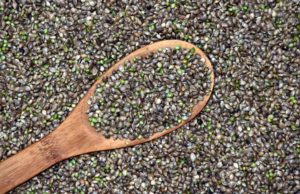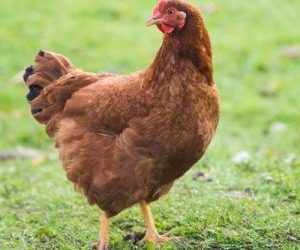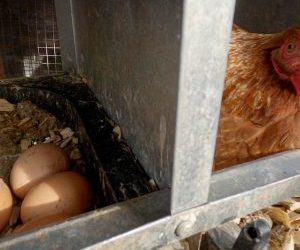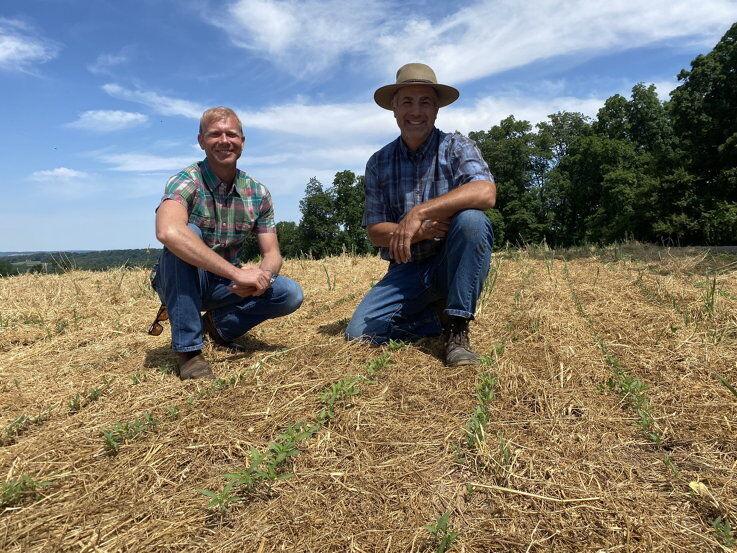
HOLTWOOD, Pa. — Although he traveled to Washington, D.C., this week to talk to lawmakers about hemp as a livestock feed, Andrew Bish isn’t what you’d call a lobbyist.
His family has been farming in Nebraska for generations, and he’s currently the chief operating officer at Bish Enterprises, the farming equipment company his grandfather started in 1976.
“What we’re most famous for is our header adapters. We adapt red headers to green combines and so on and so forth, and we’ve got about 130 different combinations now,” he said.
In 2017, Bish founded Hemp Harvest Works to help meet the equipment needs of the burgeoning hemp industry.
Bish is also the president of Hemp Feed Coalition, a nonprofit organization dedicated to getting federal approval for hemp and its byproducts as a commercial animal feed, which is why he was on his way to Washington this week.
“We’re a small group and we don’t have the funds for a lobbyist. So we do a lot of things with our own two hands,” he said.
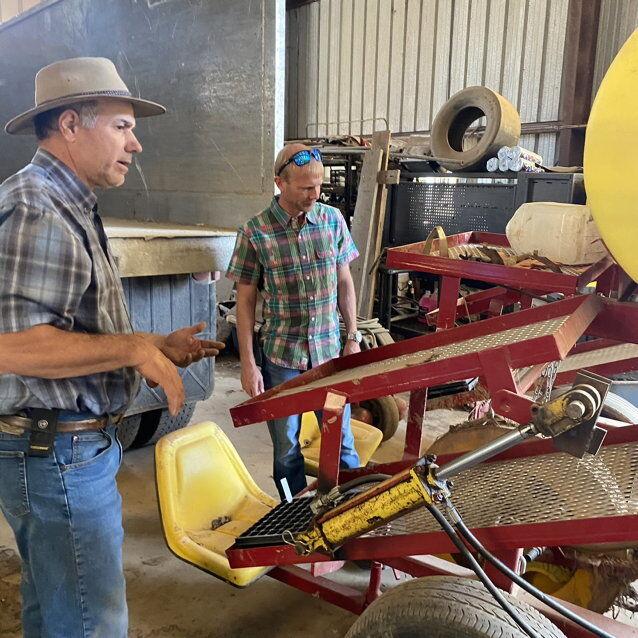
On his way there from Nebraska, he made a stop in Lancaster County to meet up with Steve Groff to talk about cover crops, no-till farming, industrial hemp and harvesting equipment.
“I’m here just to kind of understand the conditions under which Steve’s working in and how you’re growing. Because the way that you grow here and the way that you grow in the Midwest, especially with your model, is significantly different,” Bish said.
The farming model he’s talking about is Groff’s extensive use of cover crops and no-till practices.
Groff hasn’t plowed his fields in over 30 years which, as you’ll see, makes a big difference.
Farming in Nebraska, with its big flat fields of corn and soy, is a little different than farming in Lancaster County where a tapestry of small family farms dots the green rolling hillsides.
One thing both places have in common this season is lack of rain.
But whereas Lancaster County is experiencing moderate drought, almost the entire state of Nebraska is in severe, exceptional or extreme drought, according to the National Integrated Drought Information System.
Groff was expecting Bish on Monday morning, and he invited Sarah Mitchell, hemp specialist at King’s AgriSeeds, to meet them at his farm.
Both Bish and Groff contacted me beforehand to see if I would join them. Not wanting to miss an opportunity to hear good conversation about farming, I made my way out to Cedar Meadow Farm.

Groff led us to a field where tiny hemp plants were emerging from the thick layer of cover crop mulch, which he estimated is 6,000 pounds per acre of dried biomass.
After terminating and crimping the cover crop, he direct seeded the hemp using a specialized no-till planter.
With the lack of moisture lately, it’s nearly a miracle that the seeds germinated. Miraculous yes, but a harnessed miracle — the mulch locks in the moisture, which in this case was enough for germination.
“Where we’re standing in here today is a mulch that’s 100% covering the soil, so that from now on, any drop of rain I get, I’m going to maximize its use. It’s not going to evaporate,” Groff said.
The mulch keeps the soil cool, too. Groff said the previous Friday was sunny and 94 degrees at his farm. A remote sensing temperature gauge showed the temperature of the bare soil was 140 degrees, but the soil under the mulch was in the low 80s.
While no-till farming is growing in acreage in Nebraska, Bish said there is still too much tillage there.
“I’m not sure if it’s going to be no-till, but definitely a reduced tillage strategy is going to be important for our area,” he said.
The mix of cover crops Groff used on this field was hairy vetch, winter peas, oilseed rape and black oats.
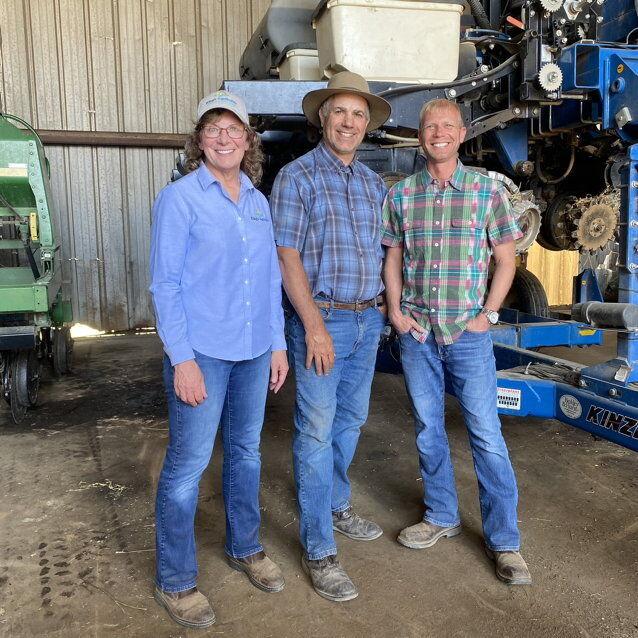
Mitchell said it’s important to get the cover crop mix just right. She said Kings AgriSeeds has done extensive research on cover crop mixes and how they affect the crop going in after it.
“We’ve actually found that right down to the species or the variety can make a big difference in the outcome of the success of that cover crop,” she said.
Geography is also important, Mitchell said.

“What works in Pennsylvania may not work in New York. So depending on where you are, even up into Maine, we have different recommendations based on your location,” she said.
Groff and his son, David, took us out to another field where several different varieties of hemp had recently been planted. It was the same situation. The field was dry, but covered by a thick layer of cover crop mulch, and sure enough, the tiny hemp seedlings were pushing their way through.
The Groffs planted 50 acres of fiber hemp this year — all in no-till — possibly making this farm one of the largest no-till hemp operations on the East Coast, if not the entire country.
When this hemp is ready to harvest in about 100 days, it will be fairly tall. Last year, Groff chopped his fiber hemp with a sickle-bar mower, but for this year’s harvest, he hopes to have a pull-behind multi-height sickle mower, known as the FiberCut and made by Bish’s Hemp Harvest Works.
And Bish would certainly like to sell him one.


